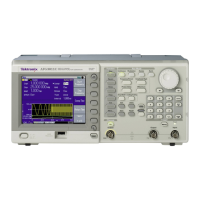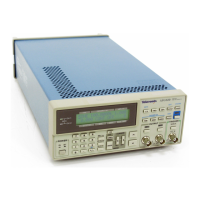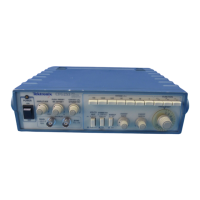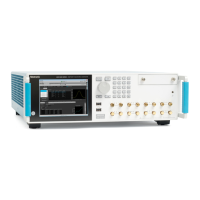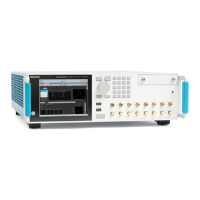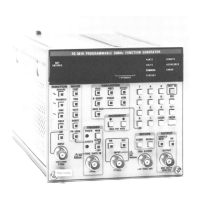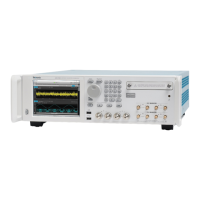Mainframe troubleshooting
Oscillator calibration
The diagnostic
readouts in the UTILITY menu include readouts for Tune and Cal,
which are related to the oscillator calibration as described below:
Tune. The Tune
readout indicates how far the system is being pulled from the
calibrated internal frequency value in order to lock to an external reference.
If you use a GPS7 or AGL7 m odule to lock to a video source that is 5 parts
per million high, then the tune will say +5e-6. Notice that this allows one
to actually measure the frequency of th e reference input, and to see if the
input is near the end of the available tuning range. If the system is in internal
mode the tu
ne value should be 0.00 e-6 and the integer values will equal
the calibration value.
The integ
er values indicates the actual tuning control word. The allowed range
of this tuning word is 0 to 4,194,304. The first number is the actual value at
the present time, the second value is the target value for the control loop. In
most cases these two values are the same, but in the case when system needs
to make a large frequency change, then depending on instrument mode the
value may slew slowly to the target value to stay inside the allowed slew rate
for ref
erence systems. In this case t he first value will slew over seconds or
minutes u ntil it equals the second value. If the instrument is taking a long time
to lock this display may provide valuable information about what is happening.
One value of the Tune diagnostic readout is to see if the instrument needs
to be calibrated. If the instrument is locked to a traceable reference, then
any tune value indicates error in the instrument calibration. For example, if
the instrument is locked to GPS and the Tune is more that 0.1 e-6, then you
should consider calibrating the internal frequency of the instrument. This
can
be done in service with no disruption to the operation. See the TG8000
User Manual for instructions.
Ca
l. The Cal readout value represents the correction applied to the oven
oscillator clock to make the internal mode frequency be calibrated. The
integer value is the tuning control word to make this happen, and the
“0.59e-6” is the fractional correction being applied, in the example case this
is 0.59 parts in 1 million. When the instrument calibrated is performed, this
number will typically change.
Over the life of the oven, the expected drift is +-2.5 e -6, so this number should
always be in this range. If the number is not in this range, then the instrument
may have been miscalibrated or the oven may have drifted out of spec. See
the TG8000 User Manual for instructions.
TG8000 Multiformat Test Signal Generator Service Manual 2–11
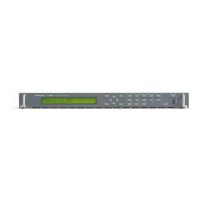
